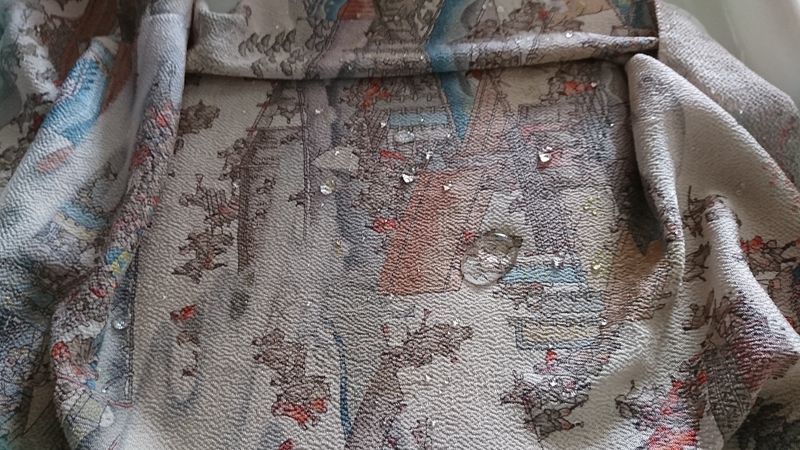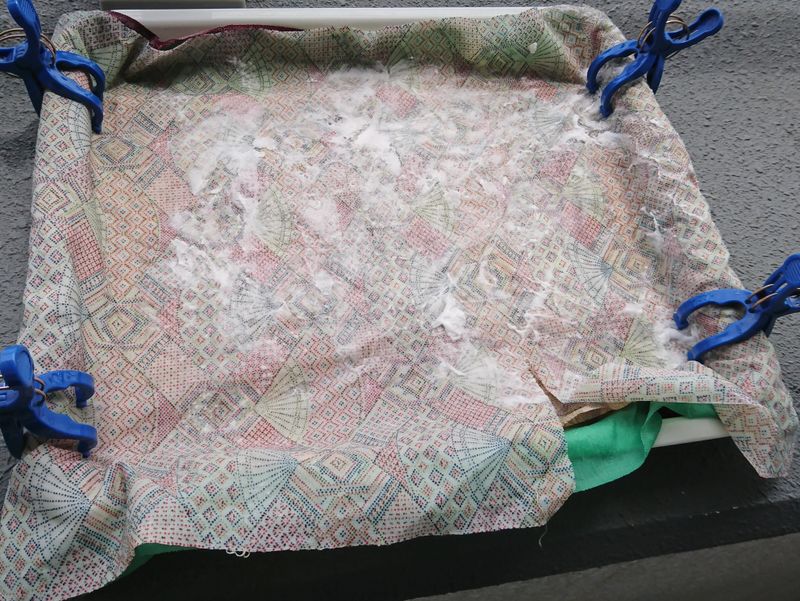Oct 3, 2019
How to De-Funk Kimono Scraps in Japan
If you live in Japan and are interested in fabric-related scrap projects, you may have found bags of kimono and other old silk fabric scraps available for purchase in some cloth and craft stores. The idea of being able to make things with such old, beautiful cloth can be enticing, but for one of my friends, the purchase contained something much more treacherous.
The smell was something like the acrid stench many elderly men in Japan tend to acquire after a certain age, but even more pungent. The reason they had sold the scraps wrapped tightly in plastic was clearly to avoid anyone smelling the things beforehand. It was so bad that I considered whether people had died in the clothes the scraps had come from.
After the stench came the itchiness. I do not know what is used instead of moth balls to keep kimono safe from bugs but whatever was used on these scraps eventually took on a hostile condition, attacking the skin of anyone who came in contact. For my friend, this was a deal breaker. Having skin that is sensitive to a multitude of dyes and scents meant trying to work through these problems was not going to happen for her. I offered to take over and try my hand at redeeming the fabric scraps, knowing that my skin is significantly less sensitive. Whatever chemical wound up lingering on these scraps was hardcore enough to make me itch even after washing my hands.

The first sign that something is wrong: Silk should not be waterproof.
The internet gave me many tips on hand-washing full silk kimono with no information about scraps with funk at all, so I tried other stench removal techniques, including coating each layer of the fabric scraps in dish soap and baking soda. I let these sit in a cleanly cloth lasagna, even in sunlight to try to combat the issues. I then washed the lot by itself in a lingerie bag and dried it in the sun but the stench and itchiness remained, though a little less intensely.

My cloth lasagna: Utter Failure.
At my wit's end, I wadded the lot up in a small bucket and poured in a cap-full of our American fabric softener that we had picked up at Costco. The "spring scented" solution I find good in small doses, though sometimes if it is used too thickly it gives the impression of being assaulted by a bouquet. Even if all it did was add a floral component to the funk, it was worth a try.
Drying on the balcony, but still stinking? Maybe.
The bucket sat overnight before I washed the contents, again in a lingerie bag and separately. Somehow this managed to do the trick. The itchy funk finally left, the scraps now smelling lightly of that spring scent. I returned the scraps to my friend who enjoyed finally getting to make her intended crafts from them.
So if you pick up scraps that come with a little something extra, forget the baking soda. Drown them in fabric softener. I do not know if Japanese brands would have the same effect as their scents tend not to be as strong as many US brands, but I would use them in a pinch.
BEWARE: After writing this, I bought my own bag of kimono scraps, confident I could rid any smells the same way I had the last. Unfortunately, many of the scraps in my new bag had bright red and deep purple dyes that had not fully set in their host fabrics and muddled the lot of my purchase while retaining the acrid smell. If your mixed bag of kimono scrap contains many brightly colored bits, wash and soak them separately. Getting some color dye stopper from a craft store might be helpful, but not after already ruining a bunch of otherwise beautiful cloth.



0 Comments